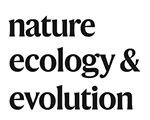Chromosomal inversions are a form of genetic mutation in which a segment of DNA reverses orientation along a chromosome. Inversions were first discovered over 100 years ago by Drosophila geneticist Alfred Sturtevant, who when mapping the ordering of genes, noticed chromosomal regions that appeared “flipped” between flies. For many decades, outside of fruit flies, we had little information about the abundance and relevance of inversions. However, recently, advances in DNA sequencing technologies, especially the development of long-read sequencing which allows for thousands of DNA base-pairs to be sequenced in a single read, are allowing researchers to identify and characterize inversions in almost any species – from sunflowers to butterflies. Thus, it is an exciting time to study inversions and to test if and how these mutations may contribute to trait variation in organisms.
Although inversions have now been well-characterized in humans, little is known about how common they are in other mammals. The deer mouse (Peromyscus maniculatus) is the most abundant mammal in North America, where they occupy every terrestrial ecological niche. Studies from the mid-20th century showed that deer mice harbor variability in their chromosome structures, which hints that they also may harbor inversions. In our recent study, published in Nature Ecology and Evolution, we used a combination of methods and approaches in population genomics to scan the deer mouse genome for inversion polymorphisms (that is, inversions that are found in some but not all individuals within the species). Quite to our surprise, we found many inversions within this one species! Specifically, we identified 21 inversion polymorphisms (that were >1Mb), which together cover nearly 20% of the genome. These inversions are large, spanning millions of base-pairs and sometimes encompass an entire chromosome arm. This means that the inversions are changing the position, orientation and order of hundreds of genes along a chromosome, and sometimes re-positioning the chromosome’s centromere from the middle to the end of a chromosome.
Because we identified so many inversions, we could ask more general questions about why these inversions form. For example, is there something unique about the inversion “breakpoints” – the two specific DNA positions where the DNA breaks and allows that genomic region to flip and then reintegrate in the opposite direction? This is a challenge because these regions of the genome are often very messy, with lots of long repeats (one reason why inversions and their breakpoints had been so difficult to detect with traditional short-read DNA sequencing). Nonetheless, by carefully analyzing these breakpoints, we were able to figure out that the inversions likely originated due to spurious recombination within a chromosome (as opposed to repair pathways of double-stranded DNA breaks). Because inversions can facilitate the early stages of genome evolution, this gives some clues as to how large changes to the genome can arise.
Our findings also raised a puzzling question: why are so many inversions maintained within deer mouse populations? In many ways, inversions should be costly to a species because they can disrupt the function or expression of genes and interfere with the critical process of recombination. Yet, we found that most of the inversions did not show signs of strongly negative effects, such as disrupting protein-coding sequence or accumulating costly mutations. On the other hand, we found that a number of these inversions are likely maintained by natural selection, suggesting that they are beneficial in some environments but not others. For example, nine inversions are found to be common in forest habitat but not nearby prairie habitat, and five inversions affect traits known to be beneficial to deer mice in forest habitat. In fact, earlier this summer in our study published in Science (led by Emily Hager and Olivia Harringmeyer), we found that a large inversion on chromosome 15 acts as a “supergene”, ensuring the co-inheritance of both long tails and dark coats in forest deer mice (and short tails and light coats in neighboring prairie mice). Using a combination of field work and population genetic modeling, we were able to demonstrate a key role of this inversion in local adaptation.
Together, our recent work highlights that inversions are surprisingly common in deer mice and may be critical in local adaptation, thereby facilitating the expansive range of the species. It will be exciting to see if the same is true for other species and to better understand the importance of this form of previously underappreciated mutation in creating and maintaining biodiversity.
by Olivia Harringmeyer and Hopi Hoekstra



